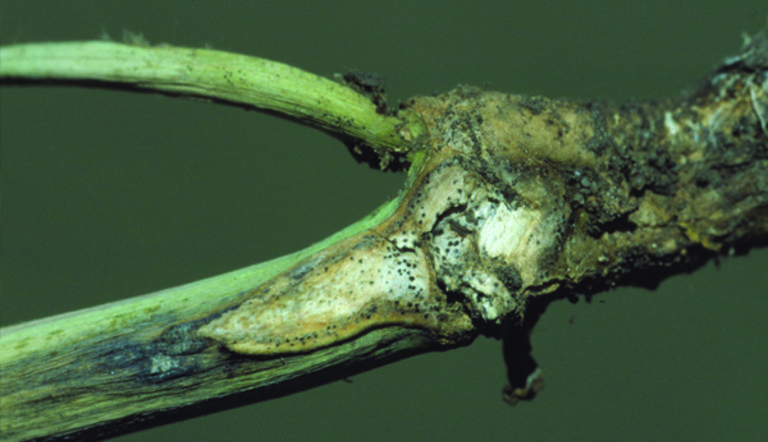
Pest Profile: Blackleg
The disease is often spread to crops through residues from infected plants, but wind or rain can also spread spores to new areas. Growers should be particularly cautious during warm, moist years or in regions that get a lot of rain, as these conditions favour rapid spread. However, the disease is found both in warm, humid regions and dry regions across Canada, so it’s important for growers to keep an eye out when growing susceptible plants.

IDENTIFICATION
The first symptoms appear on the cotyledons or leaves as round-to-irregular (1/2 – 1 inch) white to yellow-brown lesions that contain numerous small black dots (pycnidia). As the season progresses, the fungus may spread to the stem and crown of the plant, producing a canker that can girdle the stem. Severely infected plants ripen prematurely and have a black-to-grey discolouration at the base of the stem or crown.
CONTROL TIPS
-
Maintain a good crop rotation that has at least 3 years between canola crops.
-
Plant less-susceptible varieties of canola. Most varieties are rated on a 1 - 5 scale, resistant to highly susceptible.
-
Avoid confusing blackleg leaf lesions (which are speckled) with downy mildew lesions (which are not).
REGISTERED FUNGICIDES
Please read each label to determine which fungicide is appropriate for the crop affected.